Prunus serotina
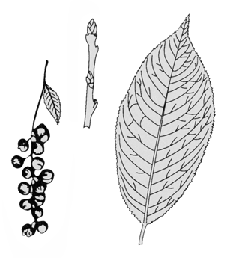 The black cherry is a valuable timber tree of medium size, reaching a feet and a diameter of 2
feet. It develops a large, rounded, oblong crown when grown in the open. It is found usually on
rich, moist soils in mixture with other species.
The black cherry is a valuable timber tree of medium size, reaching a feet and a diameter of 2
feet. It develops a large, rounded, oblong crown when grown in the open. It is found usually on
rich, moist soils in mixture with other species.
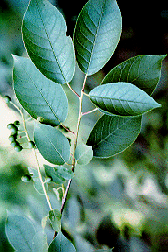 The thick leaves
are narrow and pointed at both ends. Leaves are finely toothed with teeth curving towards the tip;
dark green and very shiny above.
The thick leaves
are narrow and pointed at both ends. Leaves are finely toothed with teeth curving towards the tip;
dark green and very shiny above.
The twigs are dark red-brown, sometimes grayish, with the distinctive taste of the cherries. The fruit occurs in purple to black clusters. On young stems the bark is grayish brown to red-brown, with prominent white spots. On older trunks it is dark reddish brown to almost black, and very rough, breaking into upturned, stiff thin scales.
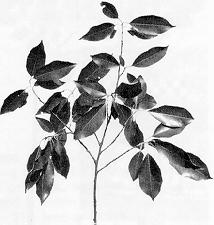 Leaves: long, narrow, finely serrated; turn bright yellow (a few turn red) in the
fall
Leaves: long, narrow, finely serrated; turn bright yellow (a few turn red) in the
fall
Branching: alternate
Bark: looks like burnt potato chips glued to the tree trunk
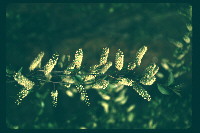 Height: 60 to 80 ft. (100 ft.)
Height: 60 to 80 ft. (100 ft.)
Trunk Dumeter: 2 to 3 ft. (5 ft.)
Longevity: 150 to 200 yrs.
Tolerance: very tolerant
Range: eastern U.S., Arizona south through Mexico to Guatemala
Fun Facts:
- Lumber is reddish in color and used in furniture.
- Berries are eaten by songbirds, ruffed and sharp-tailed grouse, bobwhite, pheasant, raccoon, red fox, whitetail deer, cottontail rabbit, and gray squirrel.
- Scratch a young twig. How does it smell? (HORRIBLE!)
- After a branch is cut, a poisonous gas forms in the leaves just as they turn yellow.
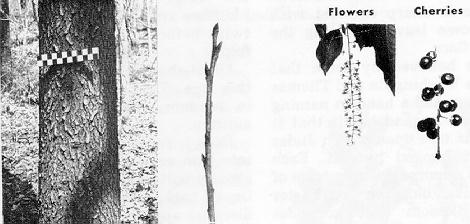
![]()